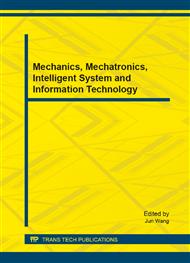[1]
Natarajan G. Knowledge Management[M]. USA: McGraw-Hill Companies, (2000).
Google Scholar
[2]
Davenport T H, Prusak L. Working Knowledge: How Organizations Manage What They Know[M]. USA: Harvard Business School Press, (1998).
DOI: 10.1108/nlw.2000.101.6.282.4
Google Scholar
[3]
Nissen M E. Redesigning Reengineering Through Measurement-Driven Inference[J]. MIS Quarterly, 1998, 22(4): 509—534.
DOI: 10.2307/249553
Google Scholar
[4]
Eppler M J. Making Knowledge Visible Through Intranet knowledge map: concept, elements, cases[A]. Proceedings of the 34th Hawaii International Conference on System Sciences[C]. USA, (2001).
DOI: 10.1109/hicss.2001.926495
Google Scholar
[5]
Doignon J P, Falmagne J C. Space for the assessment of knowledge[J]. International journal of Man-Machine studies, 1985, (23): 175-196.
DOI: 10.1016/s0020-7373(85)80031-6
Google Scholar
[6]
Bao Zhenqiang, Wang Ningsheng. Introduction of organizational knowledge management based on knowledge tree [J]. Research management, 2002, 23(1): 58—62.
Google Scholar
[7]
Cao Jingdan. Knowledge organizational based on literature knowledge unit—constructive Research on literature Knowledge base [J]. Information science, 2002, 20(11): 1187—1189.
Google Scholar
[8]
Shi yueding, Zhang shuyou, Xiangchun. Research on knowledge points express and associated technical in online course [J]. Journal of Zhejiang University, 2003, 37(5): 508—511.
Google Scholar
[9]
Carl Frappaolo:Knowledge Management (2nded. ), Capstone, (2006).
Google Scholar
[10]
Yahiko Kambayashi:Data warehousing and knowledge discovery, Springer, (2001).
Google Scholar
[11]
R.L. Daft:Organization Theory and Design, West Publishing, (1998).
Google Scholar
[12]
D. Van Fleet:Span of Management Research and Issues, Academy of Management Journal, 1983. 9.
Google Scholar
[13]
Nasukawa T. Nagano:Text analysis and knowledge mining system, 2001(4).
Google Scholar
[14]
Wen Youkui:The Knowledge Organization and Searches with the Knowledge Element, Library and information service, 2005(1).
Google Scholar
[15]
Wen Tingxiao:Research on Knowledge Unit Evolution and Evaluation, Library and information service, 2007(10).
Google Scholar
[16]
He Qun, Xu Wei, Li Shuang , Xiao Yu-Zhu: A modified digraph cell mapping method, acta Physica Sinica, 2008(2).
DOI: 10.7498/aps.57.743
Google Scholar


